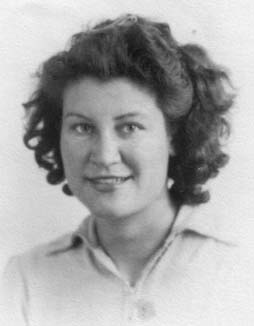Phyllis Nicolson facts for kids
Quick facts for kids
Phyllis Nicolson
|
|
|---|---|
 |
|
| Born |
Phyllis Lockett
21 September 1917 |
| Died | 6 October 1968 |
| Nationality | United Kingdom |
| Alma mater | Manchester University |
| Known for | Crank–Nicolson method |
| Scientific career | |
| Fields | Mathematics, Physics |
| Thesis | Three Problems in Theoretical Physics |
Phyllis Nicolson (born September 21, 1917 – died October 6, 1968) was a smart British mathematician and physicist. She is most famous for creating the Crank–Nicolson method with her colleague, John Crank. This method is a special way to solve certain math problems using computers.
Contents
Who Was Phyllis Nicolson?
Her Early Life and Schooling
Phyllis Lockett was born in a town called Macclesfield in England. She went to Stockport High School for Girls. After high school, she studied at Manchester University. She earned her first degree (B.Sc.) in 1938. Then she got her Master's degree (M.Sc.) in 1939. Later, in 1946, she earned her Ph.D. (a very high degree) for her work on "Three Problems in Theoretical Physics." Part of her Ph.D. research involved studying cosmic rays, which are tiny particles from space.
Working During World War II
Phyllis Nicolson's Ph.D. studies were paused because of World War II. From 1940 to 1945, she worked with a research team led by Douglas Hartree at Manchester University. During this time, she became very skilled at solving math problems using special machines. She was an expert user of Hartree's differential analyser. This machine was like an early computer that could solve complex math equations.
Phyllis and her team worked on problems related to defense for the British government. Their work helped with things like radar, which was very important during the war. Two big parts of her wartime research were about how magnets work and how heat moves. These studies later became important sections of her Ph.D. paper.
The Crank-Nicolson Method
Phyllis Nicolson's research on how heat moves led to a very important discovery. She worked with her colleague, John Crank. They looked at different ways to solve "heat equations," which are math problems about how heat spreads. They wanted to find the best and most stable ways to solve these problems.
From this work, they created a new way to solve these equations. It is now known as the Crank–Nicolson method. They published their findings in 1947. This method is still used today in many areas of science and engineering, especially when computers are used to solve problems.
Life After the War
After the war, Phyllis Nicolson finished her Ph.D. at Manchester University in 1946. She then became a research fellow at Girton College, Cambridge. She worked at the famous Cavendish Laboratory from 1946 to 1949.
Family Life and Career
In 1942, Phyllis married Malcolm Nicolson, who was also a physicist. They had two sons, Donald and Roderick. In 1950, Phyllis moved to Leeds because her husband got a job teaching physics at Leeds University.
Sadly, Malcolm Nicolson died in a train accident in 1951. Phyllis then took over his teaching job at the university. In 1955, she married another physicist named Malcolm McCaig. He had a son named Ian from a previous marriage. Phyllis and Malcolm McCaig had a son together named Andrew in 1957. All three of Phyllis's sons grew up to earn Ph.D.s in different science fields.
Phyllis Nicolson passed away in 1968 in Sheffield from breast cancer. She was a pioneering woman in mathematics and physics, leaving behind an important legacy.

